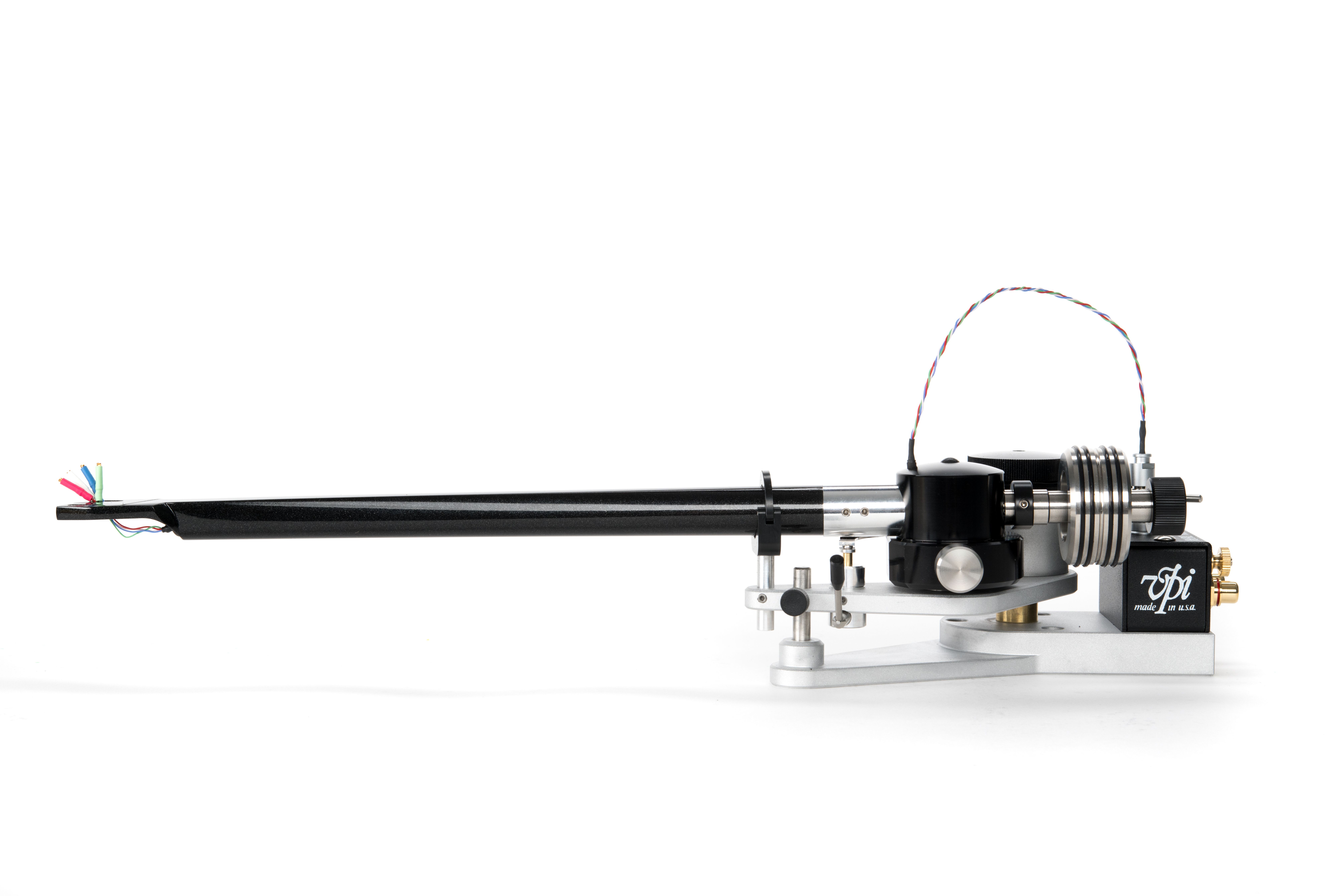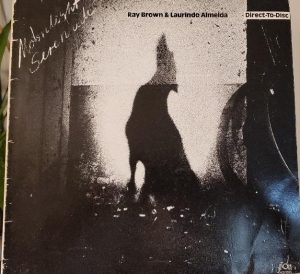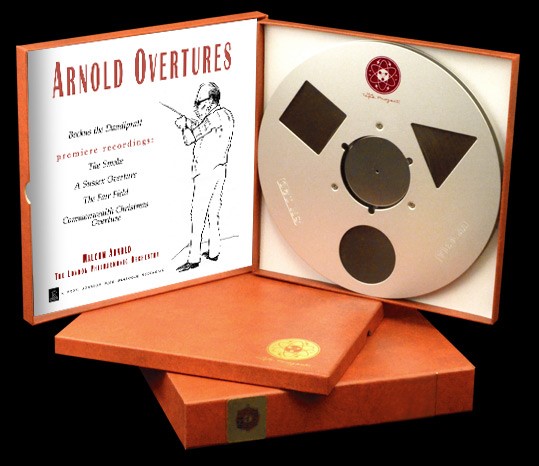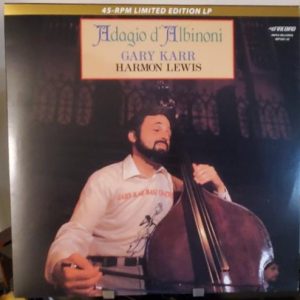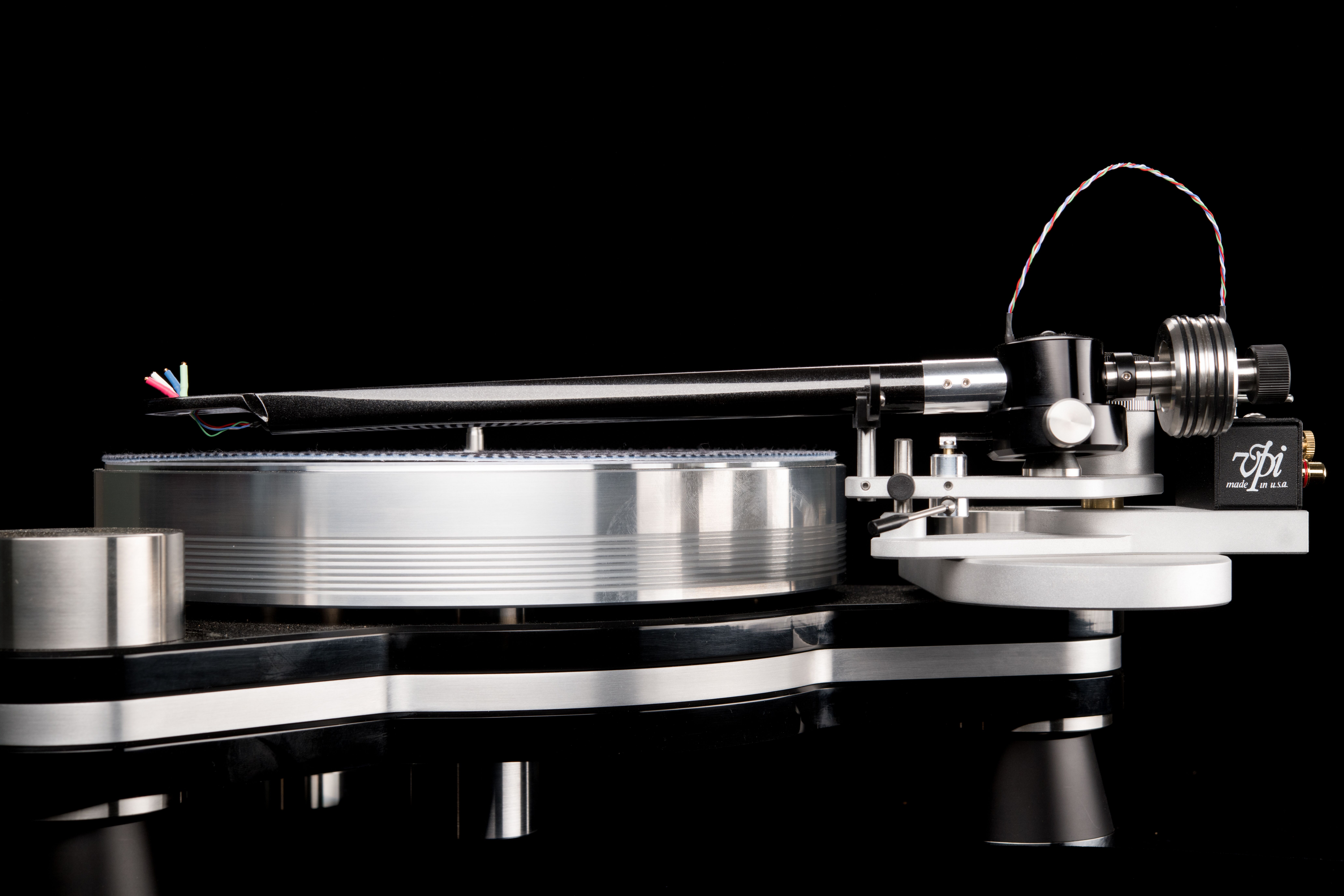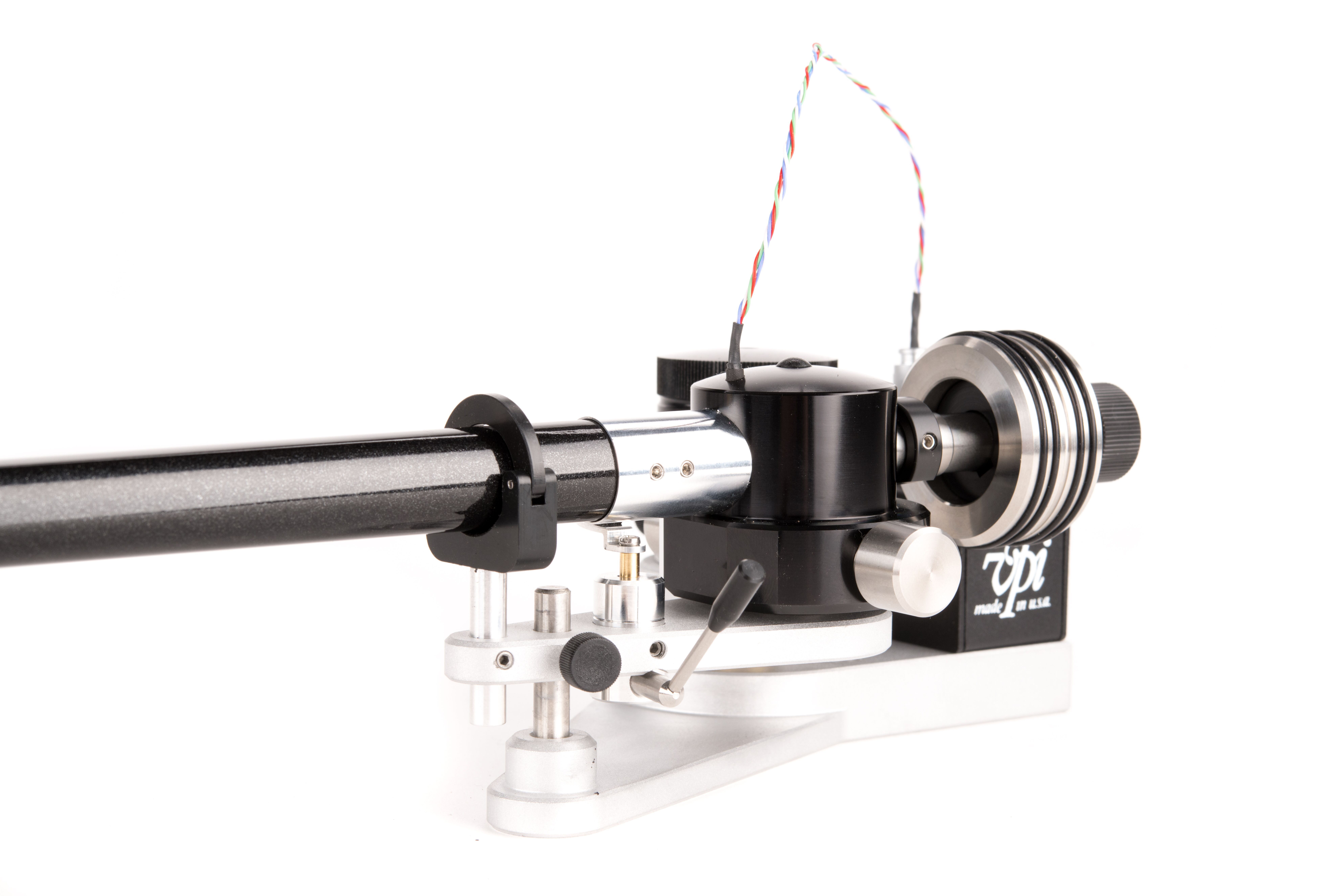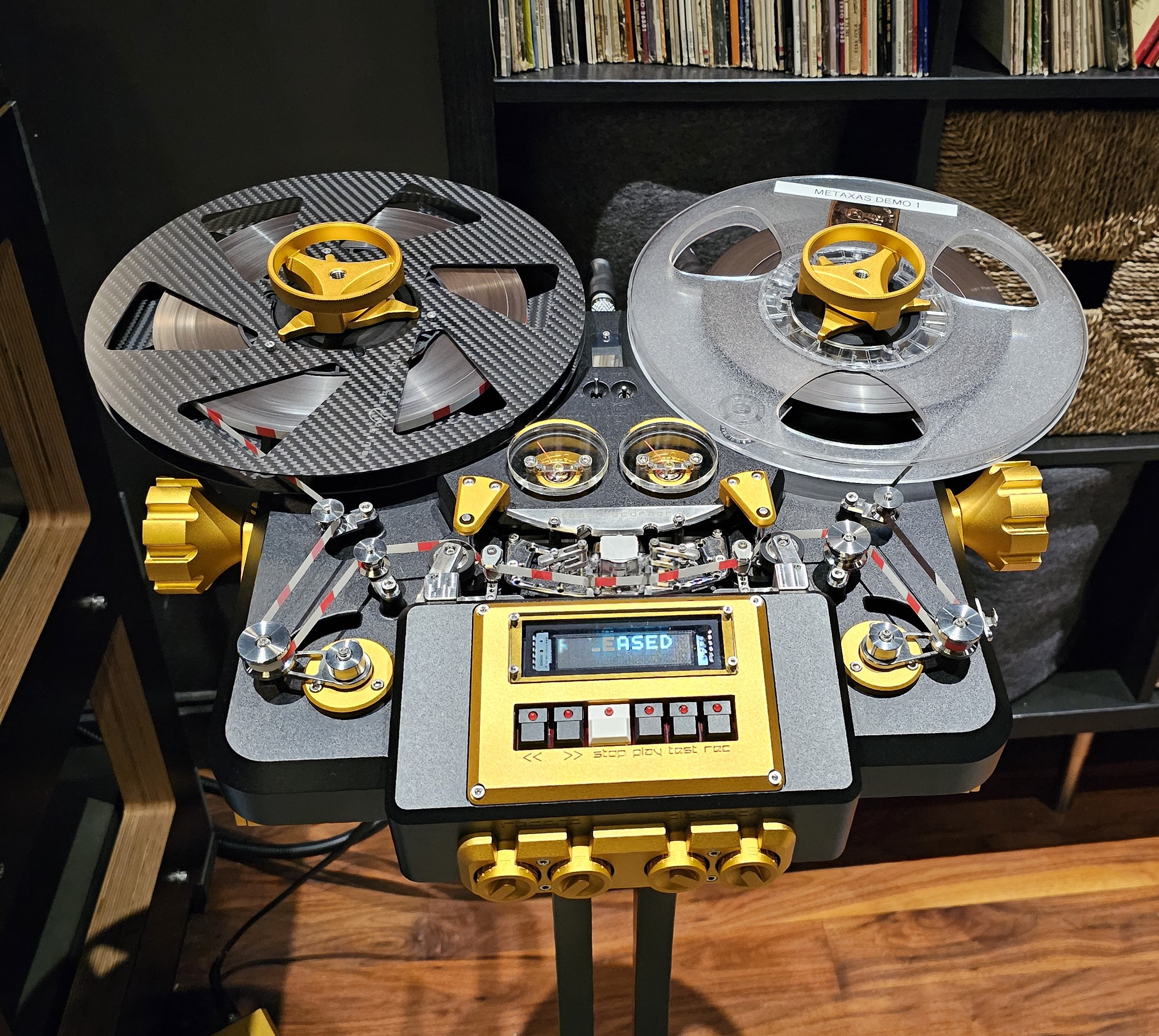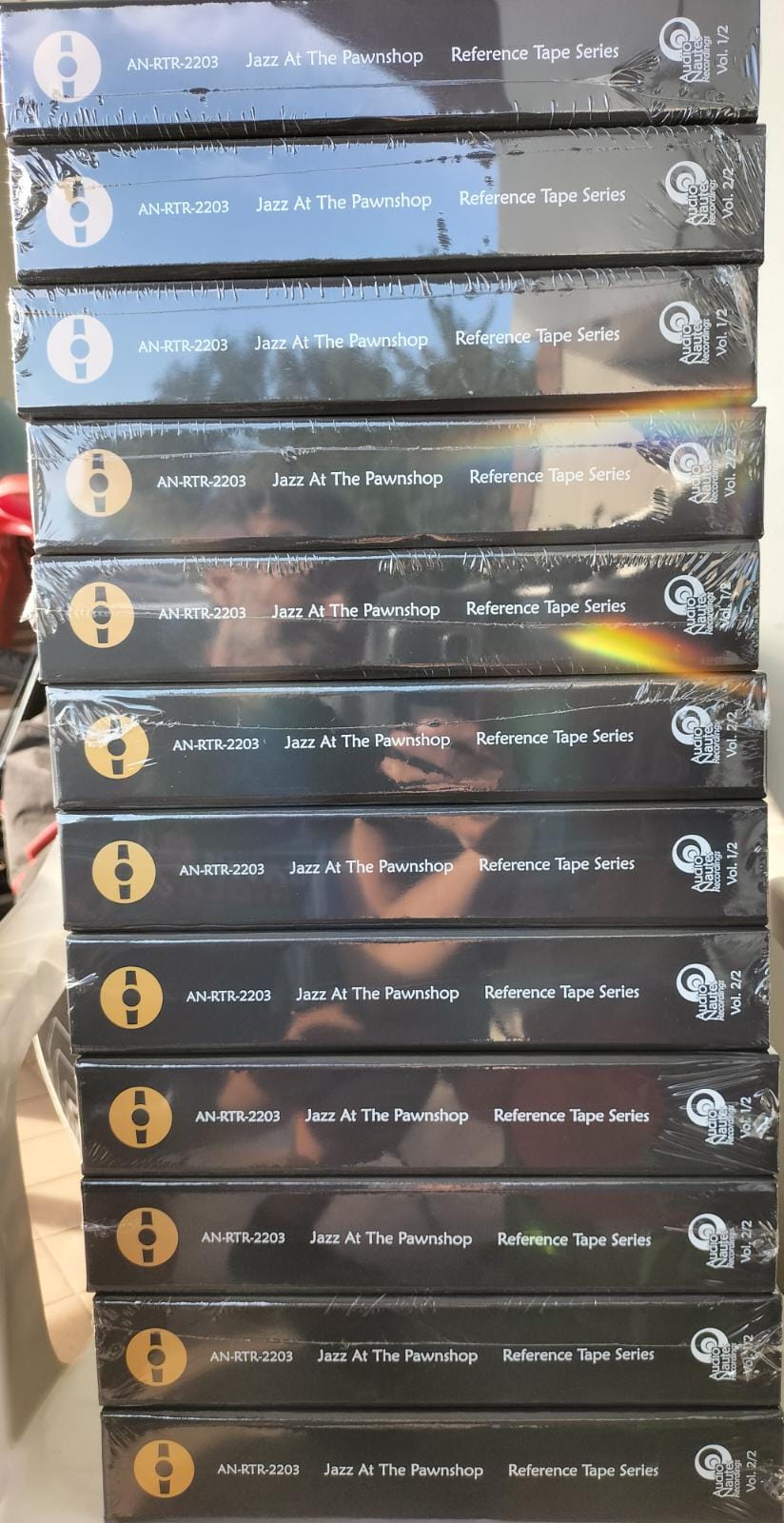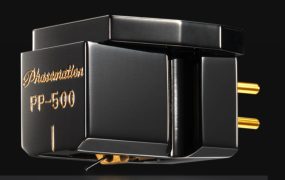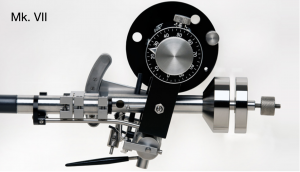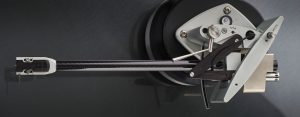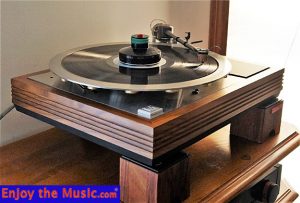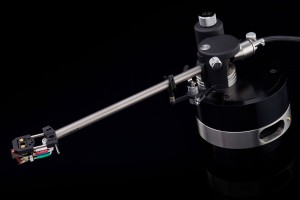First, a quick recap for readers who missed the initial installment of this two-part review. (HERE). Very early on in the course of the Fuuga review I realized that the cartridge's relatively high mass and low compliance and my reference VPI 3D printed tonearm's 10-gram effective mass weren't exactly a match made in heaven. Not a problem. VPI's latest and heavier—but at that point untested 3D printed 12-inch Fatboy—had recently arrived and was pressed into service for the Fuuga review. Changing two variables in the course of a review, however, is hardly optimal but given the circumstances there was no other option. So at the conclusion of the Fuuga review—just to level the playing field—my reference Atlas SL as well as well as the soon-to-be reviewed van den Hul Colibri Master Signature cartridges were mounted in VPI's new Fatboy tonearm. In the end, this allowed me to decipher just how much of what I heard was the Fuuga cartridge and just how much was the new tonearm. These results of these listening sessions are presented here in Part 2.
Let's step back for a moment. VPI's direct-drive and for all intents and purposes essentially plinthless Vanquish turntable hasn't garnered a lot of attention in the press or elsewhere for that matter. No doubt this product flew under many audiophile's radar screens because the Vanquish was a limited edition, special order piece (the Vanquish, however, will become a real VPI product in the very near future). Nonetheless, the successor to VPI's very first direct-drive table (HERE) has served faithfully as my reference table for several years now. The Vanquish's design has over those years remained very stable save for the incorporation of the Mike Bettinger designed power supply that among several things dropped the table's already exceedingly low noise floor and improved low end dynamics.
When all is said and done, though, it's the direct-drive tables' speed control, timing, precision, and rock solid musical control that sets the Vanquish direct-drive table apart from VPI's more well-known belt or rim drive tables. Here the fundamental is clearly separated from the instrument's overtones. Or that downbeat on the one. Those qualities really emerge when listening to music with fast transient attacks such as piano, harps, double bass or acoustic or electric guitar. Couple those qualities with the table's neutrality and dynamics—particularly in the lower octaves—and we have an "instrument" that disappears and allows tonearms and cartridges to blossom and fully realize their potential. Not to mention it's a breeze mounting most tonearms on the table (though arms 10-inches and up are preferable because of clearance issues).
Still, one thing nagged at me about the table's performance. To be sure, the Vanquish table proved an excellent platform built to accommodate up to three different tonearms (more and more audiophiles are using one tonearm outfitted with a stereo cartridge and a second tonearm holding a mono transducer). Yes, the original 3D printed tonearm later followed by the very affordable dual-pivot modification and the increased stability that this update brought to the table was a significant step-up over VPI's original Aluminum tonearm. Without doubt, the new printed tonearm retrieved more detail and information and displayed more transparency. Yet, the original VPI 3D tonearm, too, left me wanting because it never quite fleshed out the midrange nor possessed the last word in dimensionality.
Science Fiction Becomes Reality
Technology changes nowadays in literally the blink of an eye. What was science fiction yesterday is reality today. Is there any better example of the pace of technology than the communicators, duty roster pads, medical instruments and replicators seen on the original Star Trek series? Those '60s pie-in-the-sky technologies are today's cell phones, tablets and in the case of this review, 3D printing.
What does 3D printing technology bring to the table? In the case of high-end audio, it's the ability to design and manufacture difficult to machine parts and in the case of tonearms using less resonant materials. Continuum's Cobra tonearm—designed when 3D printing was still in its infancy and considerably more costly to do—was to my knowledge high-end audio's first printed tonearm. VPI (as well as some other companies that use 3D printing say manufacture parts used in their turntable) took advantage of this fledgling technology several years ago; 3D printing allowed for in the case of the Fatboy producing a triangular tapered to rounded shape tonearm shape for optimal resonance tuning.
How did VPI chance upon this technology? According VPI's President Mat Weisfeld, "this happened pretty much by accident over a corned beef sandwich at their local hangout Harolds. Harry had been working on the design of a new gimballed tonearm and he [Mat] had been teaching 3D printing to high school students in Holmdel, NJ. "One thing lead to another," Mat recalled, "with the Fatboy representing VPI's current thoughts on 3D tonearm design."
Analog Magic
Three cartridges were drafted into service for this review including the recently reviewed Fuuga, my reference Lyra Atlas SL and the soon-to-be-reviewed van den Hul Colibri Master Signature cartridges. No letdowns here either. The Fatboy brought each of this trio's strengths to the fore as well as revealing the sonic differences among this crème de la crème in current cartridges in a New York minute. Solidity, dynamics, transparency and low end were the Atlas' calling cards. Sense of ease, linearity and viscerality defined the Fuuga. Simply extraordinary low level resolution, finesse and tone were the defining characteristics of the vdh Colibri cartridge. Take your pick: there's only winners, no losers! All three cartridges are wonderful performers and always do justice to the music. Simply in different ways.
Two other additions to the system also merit mention. First was the insertion of Ensemble's new $15,000 Fuoco hybrid integrated hybrid amplifier. Not to get ahead of myself but this little honey of an integrated amplifier drove the Magico S5 Mk. 2s effortlessly and proved that hybrid technology can work. Next, Nick Doshi released a new and custom designed power umbilical cord (from the power supply to the electronics) for both his phono and tape stages that proved a worthwhile upgrade. The new cables shifted the tonality of the phono stage from the slightest bit ying to the slightest bit yin side of neutral. The cables also brought with them greater image solidity, low level resolution and transparency.
So what did this trio of exotic top tier moving coil cartridges reveal about the sound of VPI's new 12-inch Fatboy tonearm? (Or is it the other way around?) Interestingly, the new tonearm's preciseness eg. lack of smearing and linearity parallels and complements the sound of the Vanquish table. A precision that begins with the speed stability of the direct drive motor system and continues through with the new tonearm. Transients are reproduced without any sharpness or etching along with a steadfastness in the decay of the notes. A quietness and vanishingly low noise floor that allows more information through and opens up the space between performers. These qualities really come to the fore on direct-to-disc albums such as the Jeton Moonlight Serenade featuring Laurindo Almeida on guitar and Ray Brown on bass (Jeton 100 3315). The end result is that melodies, harmonies and subtle dynamic shifts and accents in the music are more clearly rendered.
Then there's the VPI Fatboy 3D printed tonearm midrange. Earlier iterations of the 3D printed tonearm were clearly superior to VPI's earlier all JMW Aluminum-based tonearm when it came to resolution, speed and dynamics. Yet the 3D printed tonearm also imparted their own signature to the sound (partially alleviated with the dual pivot modification). Specifically, the tonearm exhibited a touch of leanness and thinness in the midrange region. The latest Fatboy version of VPI's printed tonearm eliminates much of that sonic signature. Still, the character of the new VPI 3D printed Fatboy tonearm lies ever so slightly to the yang side of neutral. No part of the frequency spectrum is emphasized to the detriment of another either. There's a lack of tension (something that I will discuss more in the upcoming SAT LM-12 review) except when called for in the music using van den Hul's Colibri Master Signature cartridge. Another way of describing this tension/release might be the result of adding a neighboring chromatic note to a target chord note. What a step up these three new cartridges are over the moving coils of the '80s and '90s and even into the 2000s!
The tonearm's strongest suit is not only its dynamics but that special ability to rapidly move and shift between dynamic levels. Dynamic freedom. Lightning fast. Without strain. This is especially apparent when we're talking to low end impact and there's no better benchmark for low end dynamic performance than 15-ips tape and comparisons between reel-to-reel tape and the best sounding pressing of a particular LP release (take for instance pairings such as Reference Recordings' Arnold Overtures, Blue Note's Lee Morgan Sidewinder, Opus 3's Cyndee Peters [from the Opus 3 tape]). The result is that low end dynamics, typically the bane of turntables, tonearms, cartridges, phono stages, now comes much closer to that unfettered sound of a good 15-ips reel-to-reel tape. Capturing not only that explosive quality but the acceleration factor. Like jamming the gas pedal to the floor and waiting for the car to respond.
While on the topic of low end performance. There's not better example of the tonearm's bass performance than Kevin Gray's amazing 45 rpm remastering of the Gary Karr (double bass) and Harmon Lewis (organ) recording Adagio d'Albinoni (Firebird/Impex Records 3001-45) Karr's bass can sound overblown relative to the organ—sometimes even huge—on some arms and systems. Or the organ just doesn't move air. Not with the Fatboy. Played back by the Atlas SL, the reigning champ in this region, Lewis' organ slams you in the chest with its pressure and Karr's double bass sits right between the speakers with the right perspective relative to the organ. More to the point: Fatboy/Atlas SL combination captures both the definition and harmonics of Karr's bass and kaleidoscope of sound from Lewis' organ.
Lastly and no less impressive is the Fatboy's ability to recreate a ginormous soundstage. A soundstage unfettered by room dimensions and limited only by the recording itself or the cartridge mounted in the tonearm. It was, in fact, the tonearm's soundstaging ability that first caught this unabashed soundstaging freak's senses. Here the Colibri Master Signature with its expansive soundstage and width and depth edges out the other two cartridges. It's within this soundstage, however, that the Fatboy really makes hay. Take for example, the last few minutes of La Folia (Harmonia Mundi/ATR Mastercut 013) Side 2. This album is one of my all-time favorite Gregorio Paniagua/Pontrefact Harmonia Mundi recordings with the ATR version excelling in capturing low level details not on the original release. Seemingly endless depth when the car speeds away and then returns. When the VTA/SRA is spot on there's an ability to really localize instruments within the soundstage of this judiciously done multi-miked recording. Another example is the simply recorded Three Blind Mice album Conversations (Three Blind Mice TBM-43, 180 gm reissue). There's just a wrap your (tone) arms around the instrument quality with the Fatboy and Fuuga. Reminiscent in many ways of the best direct-to-disc LPs.
Finally, no product is perfect and the Fatboy falls slightly short of ultimate in the areas of finesse, refinement and total sense of ease. There's also some decrease in bass texture best exemplified by something like the TBM recording Conversations. The tonearm can also at times sacrifice harmonic integrity for detail. Finally, there may be tonearms that are a touch richer but in the end much of the final results come down to cartridge matching too.
Unlimited Performance
Back to the original question. Was what I was hearing the Fuuga cartridge or the tonearm? The answer? It's a little bit of the chicken or the egg. The Atlas SL cartridge also sounded better in the new tonearm. Yet there was, nonetheless, a clear sonic difference between the two cartridges. Perhaps it's best said that the tonearm is not the limiting factor in either cartridge's performance. The Atlas or Fuuga's basic "sonic signature" character essentially remains the same whether they're mounted in the VPI's 3D Fatboy or SAT's new SAT LM-12 tonearm. There's no wild disparities such as one cartridge sounding bright in one tonearm and great in the other. Or diametrically different results with one cartridge having great bass in one tonearm and poor bass response in the other.
VPI's Fatboy tonearm is a simply stunning accomplishment and could easily be many audiophiles final tonearm. There's absolutely no question that one would need to spend significantly more money to get better performance. This tonearm doesn't make every cartridge or every record sound the same or sugar coat the sound. The Fatboy's slightly heavier mass also allows for the use of lower compliance and heavier massive cartridges like the Fuuga.
Lastly, the new Fatboy tonearm is a sizable step up from VPI's earlier 3D printed arms. Current VPI tonearm owners shouldn't think twice updating to the new Fatboy especially given VPI's special offer. That goes double for VPI turntable owners still using the early Aluminum tonearms. Then sit back and relisten to your "new" record collection!
Technical Highlights
VPI is heavily invested in this rapidly evolving and ever changing 3D computerized printing technology beginning with the original 3D tonearm wand and culminating in their latest thicker, slightly heavier and redesigned Fatboy tonearm. The 3D tonearm is a work in progress because the technology is advancing in leaps and bounds. What was unimaginable years ago is reality today. Learning as we go on.
What goes into the manufacturing of a Fatboy tonearm? "To start with, it takes," according to Mat Weisfeld, "three days to build one tonearm." (just for comparison, VPI manufactured ten of the original tonearms per day). "The first step in the manufacturing process," Mat shared, "entails 'printing' the tonearm from an epoxy resin. When the tonearm emerges 24 hours later from the 'printer,' water jets are used to clean the tonearm up and the tonearm is then stair stepped. Next, the tonearm is sanded down, primed, heat and UV treated and then a final finish is applied." So this process, unlike what you see on Star Trek where things are instantly replicated, can't be sped up.
"The final step," Mat continued, "involves inserting an Aluminum rod (that makes the tonearm thicker) along with the Nordost wiring into the newly minted tonearm tube. Along the way Mat and Harry discovered that you don't need to print the entire tonearm out of epoxy. The real magic of the tonearm begins (as VPI and other tonearm manufacturers have discovered) at the headshell. That ability to transfer energy as needed into the tonearm and dissipate it. The rod serves several functions including stiffening the printed resin tonearm tube, providing grounding/shielding and serving at the pivot for adjusting VTF and holding the counterweight.
Upgrading from earlier VPI tonearms to the new Fatboy is a minute (or couple of minutes in my case) job. The tonearm rest lock down needs to be changed (and in my case, I also had to change the unipivot spike to the current 60 Rockwell hardness) to accommodate the thicker tonearm tube.
Setting up the dual pivot version of the Fatboy tonearm, in particular azimuth can be a little tricky and trying. The first thing one needs to do use your favorite method of setting azimuth (mine is the Fozgometer but others use the Feickert or Richard Mak's newest AnalogMagik) with the dual pivot disengaged. Next, the dual pivot needs to be adjusted for minimal contact and chatter using the internal tonearm outrigger. (One can if needed even rotate the tonearm tube loosening the two bolts hold the tonearm to the internal rod.) Once that is done, it's important to go back and recheck your tracking force.
One of the biggest changes to the tonearm is the shape and function of the counterweight. The new round counterweight is only used to set VTF; that's opposed to the older tonearms oblong shaped counterweight designed to set both azimuth and VTF. With the new tonearm, the outriggers are used to load the dual pivot as opposed to rotating the counterweight (with or without the Soundsmith Counter Intuitive). Another change is that the counterweight is fine threaded. A screw on the counterweight must be first unlocked (make sure to keep the counterweight screw pointed to the ceiling so the CW can be locked down when the final VTF is achieved) and then use the knurled nut on the back of the tonearm to move the counterweight towards and away from the tonearm's pivot point.
Finally, the tonearm was used with a variety of phono cables (I'm of the mind, however insane, that phono cables can make a bigger difference in the sound of an tonearm than does the cartridge) including the Transparent Audio's Ref XL in balanced configuration and FM Acoustics, Audience and Lyra's Phonopipe in single-ended configuration into the Doshi V3.0 phono stage.
3D Fatboy Printed Tonearm
Retail: $4000 and includes all unipivot or gimballed designed tonearm and all lengths
Pivot to spindle distance: 300 mm
VPI




